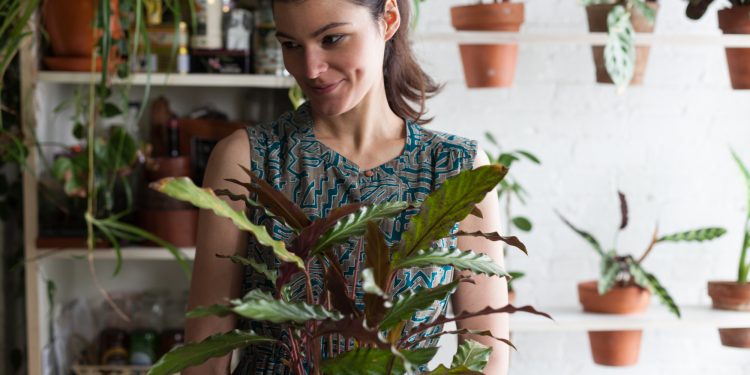5 Effective Plant Care Tips
Proper take care of plants is a prerequisite for their health. This is quite troublesome but at the same time an enjoyable thing. The growth activity and abundance of plant flowering directly depend on how carefully you follow all existing rules. Houseplants are quite whimsical and need regular care. Moreover, the needs of all flowers can be completely different. One variety needs more sunlight; another prefers to be in a cool shade; the third is extremely sensitive to the level of air humidity.
All plants will gradually wither away without proper nutrition, attention, and care. Whether you're growing a flower, a tree, or an edible plant, there are five golden rules that no plant can exist without. You can grow a large flowering plant from a tiny sprout by applying universal advice. Perhaps this hobby will become your favorite thing and grow into a business in the future.
Select Plants Based on Their Habitat
No matter how strong your enthusiasm, you cannot grow an orange tree in Alaska. Some plants are doomed to die, not because you lack experience in care, but because their habitat is different from the usual.
Therefore, the first and most important rule you must learn is “right plant, right place.” So that the torment of choice does not torment you, you can download a special app to identify plant and provide information about its habitat, genus, and care conditions. For example, “Lily – Plant identification” is an app that can recognize thousands of plant species from a photo in your gallery. The platform has a support service where experts provide care advice.
Also, you can visit the local garden center for a plant, where specialists will select a plant that will successfully bloom in your climate. We strongly encourage you to mention your lifestyle. For example, you often forget to water your plants or have pets. In the first case, plants that do not require regular watering will thank you for your negligence. In the second case, cats and dogs can get sick from lilies or daffodils. Therefore, by choosing the right plant, you will save your nerves and the life of your pets.
Determine the Degree of Illumination
For a plant to grow and develop, it is essential to provide a suitable lighting regime. If this condition is not met, the synthesis processes slow down, and the flower does not receive the necessary nutrients and begins to die. The easiest way to provide access to light is to place the plant near a window. Also, you can use artificial lighting – for at least 12 hours a day.
Do not forget about such a parameter as lighting intensity. Some plants require bright sunlight, while others do best in the shade. You can adjust the brightness of the lighting within the same room. It is enough to move a few steps away from the window, and the light intensity will decrease by half. If you go deeper into the room, the light will be reduced by 95%. By choosing a suitable place for a flower, you will see how it actively grows and blooms.
Set Temperature Mode
Most flowers do best at +13-24°C, with only exotic varieties requiring higher rates. Some plants, on the contrary, grow better in the cold. For them, the maximum heat mark is 16°C: the leaves begin to deteriorate at higher modes.
Heat-loving plants bloom at a temperature of выше +17°C. Most colors can withstand slight deviations from the norm without visible damage. They will be able to survive some periods in cold or heat. The main thing is to avoid sudden temperature changes. Only cacti can cope with an unexpected regime change: in nature, they live in places where it is hot during the day and cool at night.
Take Care of Regular Watering of Plants
The frequency of watering depends not only on the type of plant but also on air temperature, soil moisture capacity, lighting, and many other features. Aloe, agave, and other succulent-leaved plants require less moisture than hibiscus and other large-leaved species. Excessive watering is contraindicated for bulbous plants – the bulb can rot.
Abundant watering is required for flowering plants and those in the growth phase, with many leaves, with a powerful root system. Also, you will need additional moisture for flowers in clay pots with large drainage holes. Both hot weather and dry, warm air in winter are considered a signal for frequent watering. Remember that it is better to water little and often than rarely and abundantly.
Soft rainwater is most suitable for irrigation. It is better to pass tap water through the filter first to exclude salts, contraindicated for azaleas, orchids, ferns, and camellias.
Don't Make Sudden Changes in Plant Life
Plants are sensitive to any changes. They are slow to adapt to new conditions, and when they finally find their place under the sun, sudden changes can worsen their growth and flowering.
Therefore, we will look at two examples of when you need to take care of the plant in advance if you plan to make changes. Let's say you want to grow a giant pomegranate tree. In this case, we recommend that you plant the seeds in a container that will be most comfortable for the plant when it reaches a large size.
The second case concerns moving the plant to a new house, apartment, or office. To facilitate the adaptation of the plant to a new place, we recommend leaving it overnight in the open air – this is a natural habitat to which plants quickly adapt. Then the plant will better endure the move and not notice any critical changes.
Conclusion
Plants, like people, need good living conditions. Light, air, and water are the main indicators without which plants cannot live for a long time. If you are serious about growing a beautiful plant, be patient and love. Plants feel any change or negativity and your task is to provide them with care.

























